More information has emerged about HOW an Airbus A321neo lost several passenger windows in flight, with more damage affecting its tail.
We first looked at this event shortly after it happened, nearly three weeks ago. A Titan Airways A321neo took off from London Stansted Airport (EGSS), as flight AWC-305Y. Its destination was Orlando International (KMCO) in Florida.

But shortly after departure, the pilots of the aircraft decided to return it to Stansted. They landed safely (overweight) on runway 22, the same runway they departed from, about 36 minutes after departure. The reason for their return was that several passenger windows of this A321neo came loose in flight. During their departure, one or more windows damaged the horizontal stabilizer of the aircraft.
We now know that there were 21 people on board this jet, all of whom were staff members of Titan Airways or employees of a partner tour operator. The airline had just taken back this jet, which had previously been wet-leased to the UK Government, for about a year and a half.
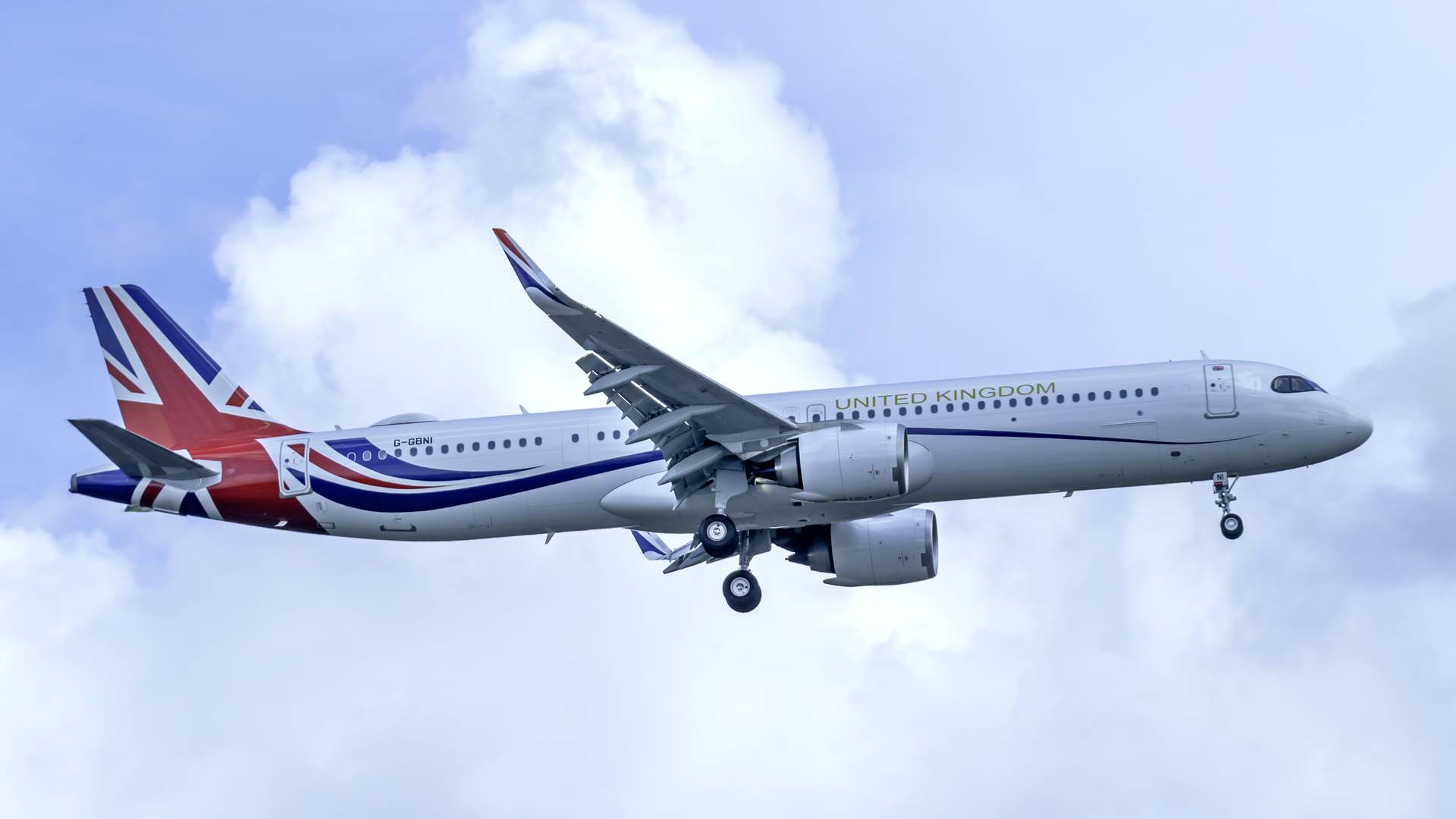
Just days before the event involving these passenger windows, Titan Airways sent this A321neo to London Southend Airport (EGMC), to reconfigure its interior and give it a new paint job. The rather dark color of this new livery may have had a role in subsequent events.
After this reconfiguration, the aircraft made a short, positioning flight back to Stansted. Following the incident, some assumed that the “departing” passenger windows of the A321neo may have had something to do with this work in Southend. That’s despite the short positioning flight, which didn’t reveal any issues.
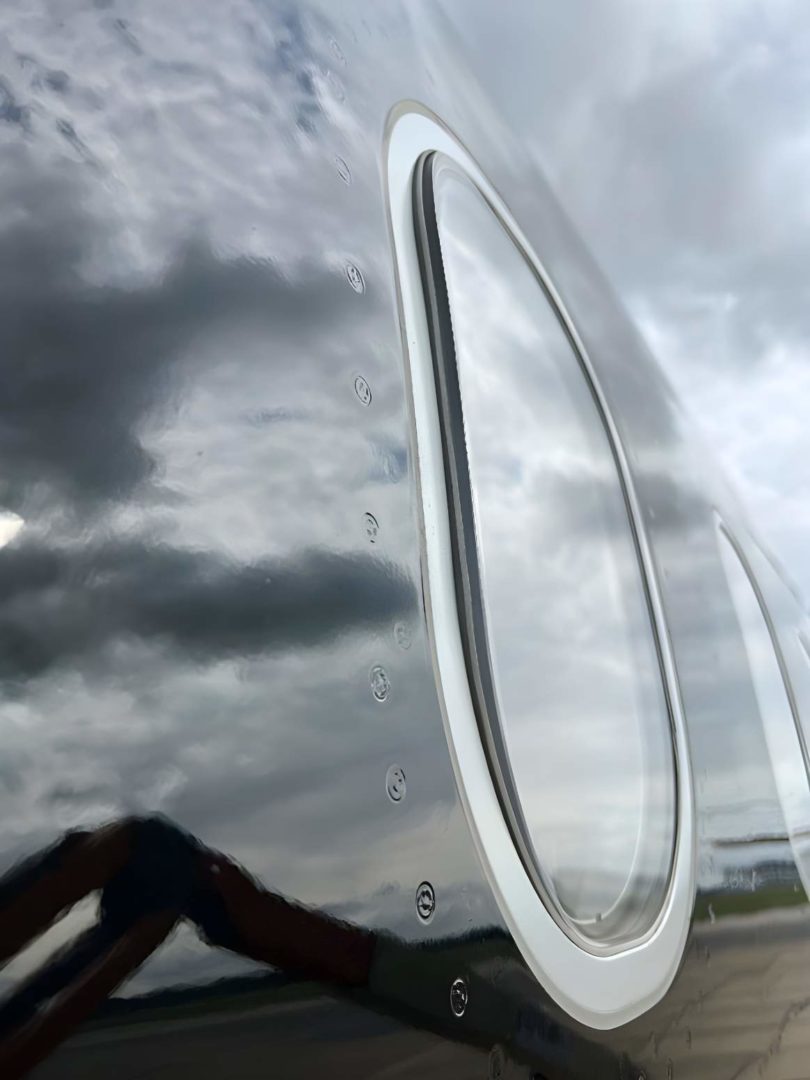
Titan A321neo – Shedding Some (?) Light on the Passenger Windows
It now seems that the investigation into this incident is looking at a different “suspect”: really, REALLY powerful lights. After its return to Stansted, the aircraft was used for a filming session. We don’t know if this was for a movie, or perhaps a promotional clip for the aircraft itself.
But in that process, a film crew placed multiple powerful lights on both sides of the aircraft. The film crew focused their lights on a small number of passenger windows on each side of the A321neo, to light a small section of its cabin, over the wing.
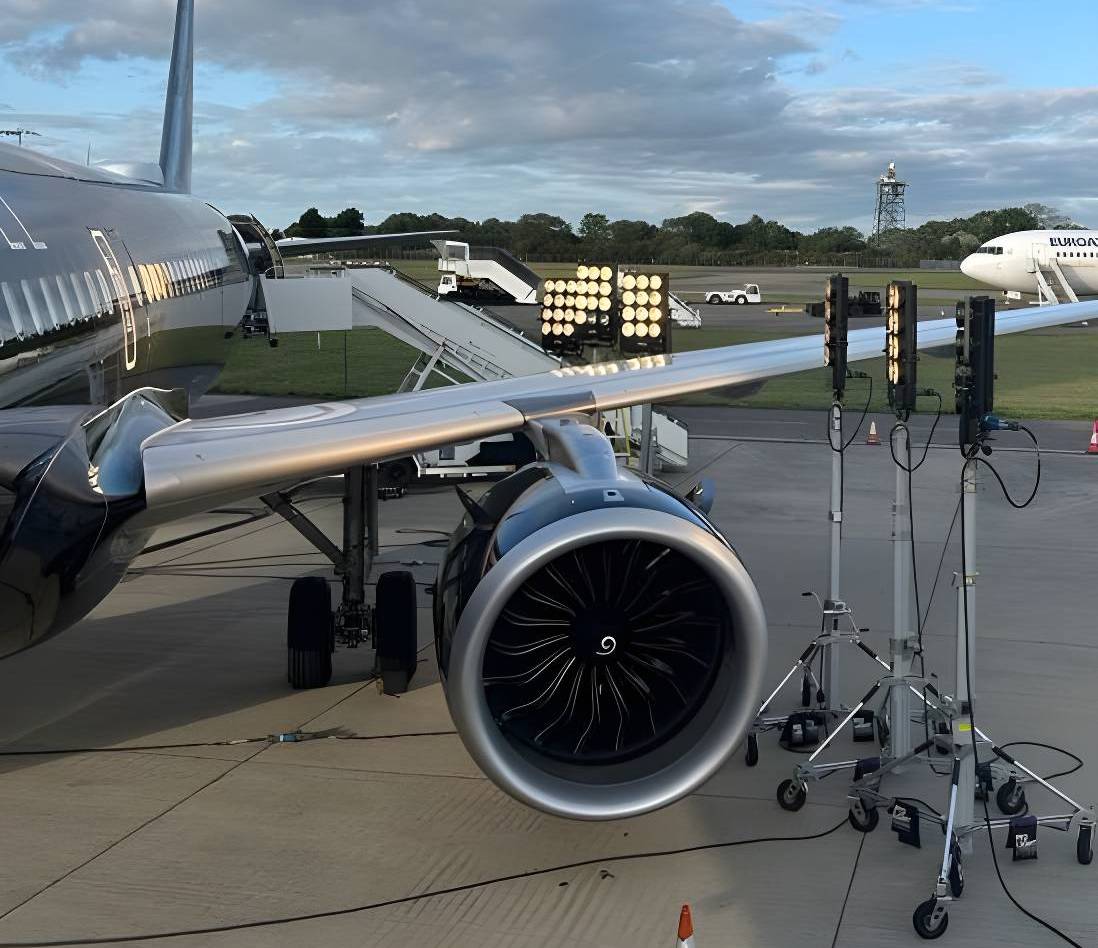
The windows that suffered damage were in that section of the aircraft. It appears that the film crew left these lights on for 5:30 hours (!) on the right side of the aircraft. They then switched them to the left side, leaving them on for 4 hours.
The 21 people on the subsequent flight were: 3 pilots, an engineer, a loadmaster, 6 cabin crew, and 9 tour operator employees. Aside from those in the cockpit of the A321neo, everyone else was sitting in a section of the cabin forward of those passenger windows.

After the flight, all passengers remarked that the aircraft was noisier than they were expecting, as they took off. The flight crew switched off the “fasten seat belts” sign at FL100. That’s when the loadmaster stood up and went to investigate.
The loadmaster focused his attention on only one of the passenger windows of the A321neo, whose windowpane “appeared to have slipped down”. He also noted that the noise was “loud enough to damage your hearing”.

It Has Happened Before
By the time the loadmaster’s observations reached the cockpit, the aircraft was climbing through FL130. Amazingly, at that point, the pressurization system was still working normally. The flight crew leveled off at FL140, while the engineer and the third pilot went back to look at the problem.
Their curiosity satisfied, the crew informed their colleagues in the cockpit, who initially descended to FL100, before returning to Stansted. The pressurization system managed to keep the cabin altitude under control for the entirety of this short flight.
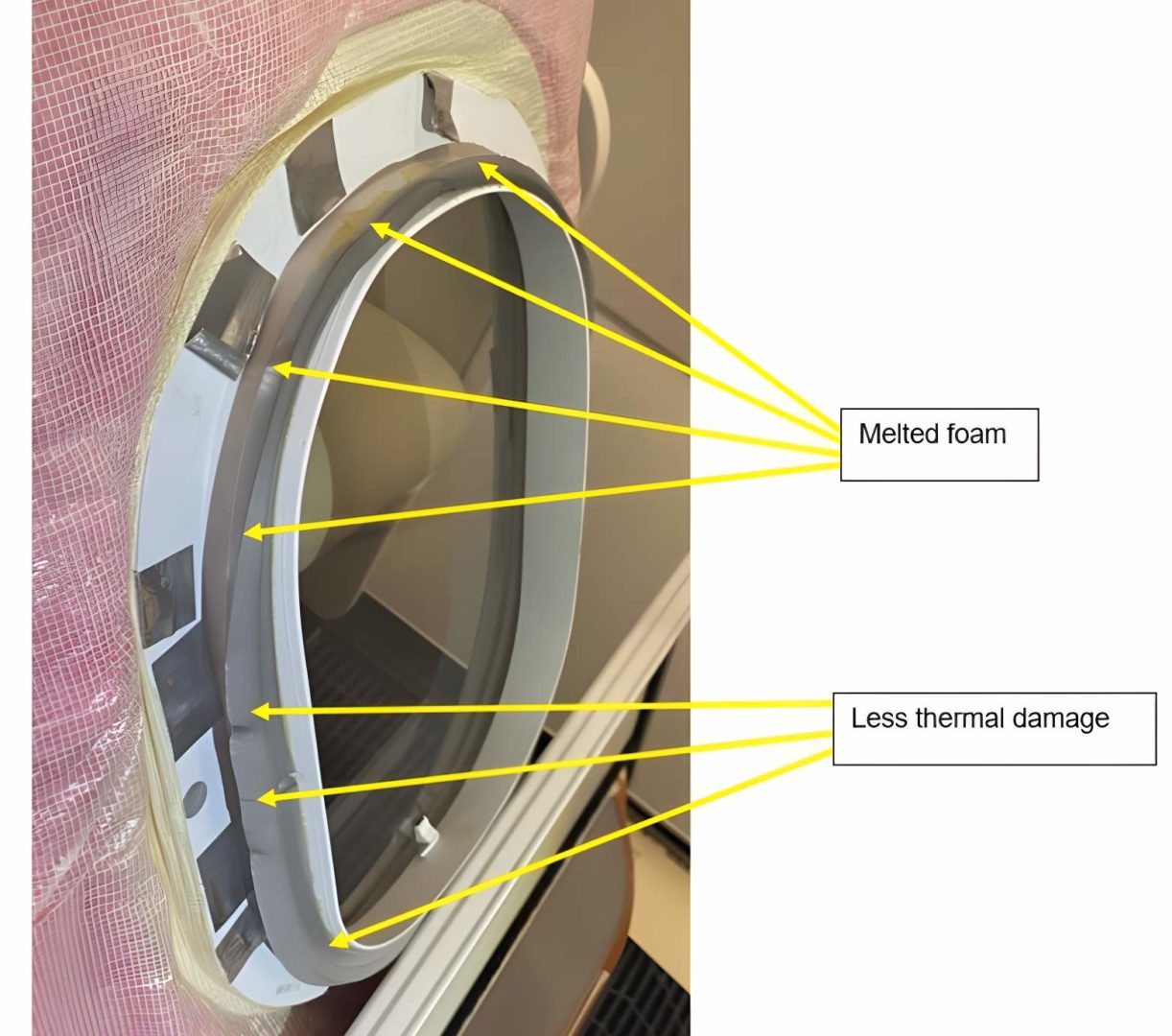
After the A321neo landed two passenger windows were missing their outer panes. At least two other windows had visible damage to both outer and inner panes. It is the outer pane that maintains cabin pressure. One shattered outer window pane was later found on a taxiway.
Britain’s AAIB is publishing some early findings in its investigation, to bring the matter to the industry’s attention. Its investigators noted that these filming lights come with minimum recommended distances from the subject. In the case of the A321neo, the affected passenger windows were closer than that minimum.
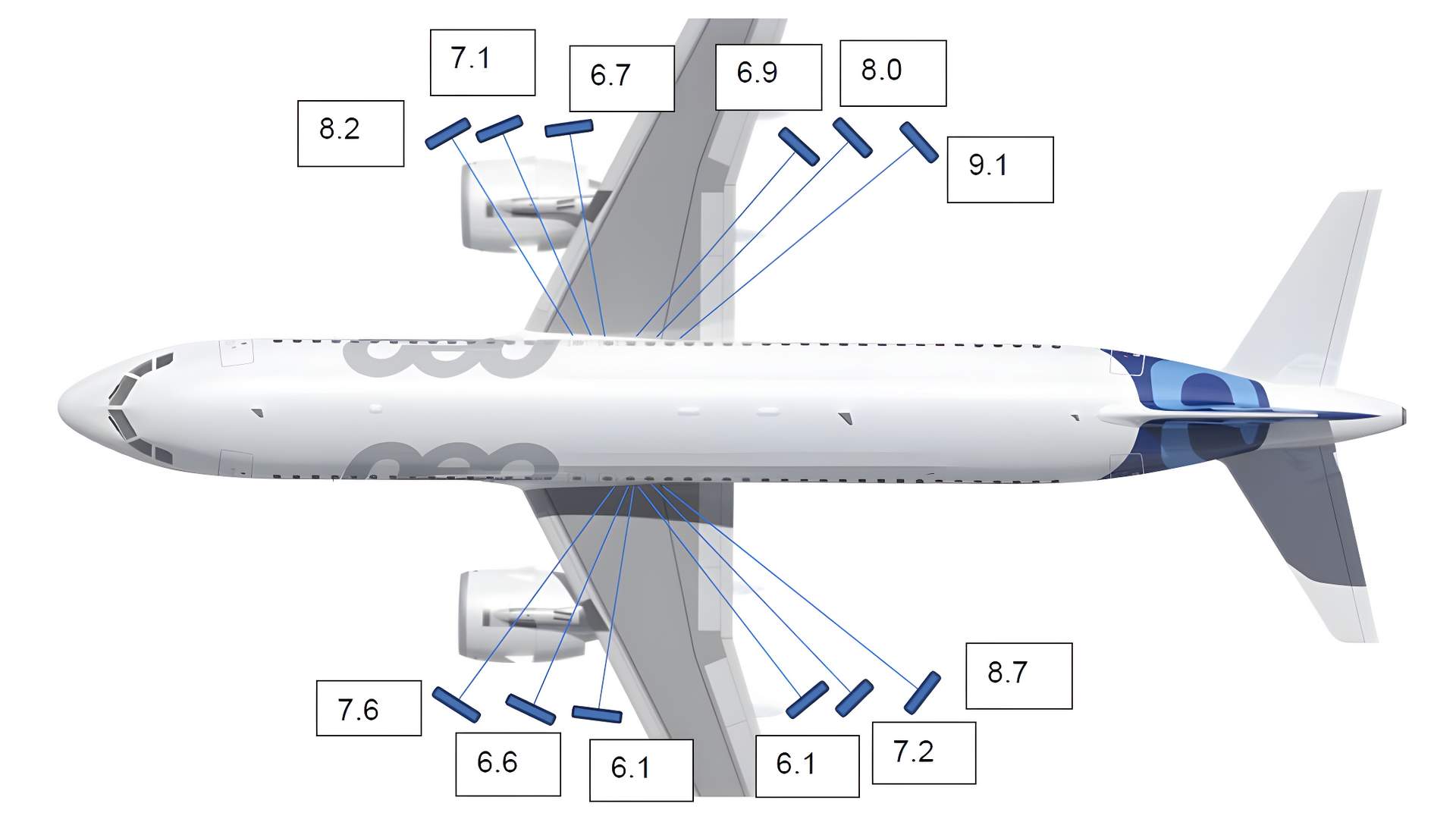
It appears that the filming lights caused the temperature around the windows to rise enough to melt some materials surrounding them. The temperature also caused some inner window panes to shrink. The investigation is ongoing.
There has been at least one other incident where aircraft passenger windows suffered damage because of powerful filming lights. This was a Turkish Airlines 787, in 2019. But on that occasion, the damage was obvious enough that the aircraft never left the ground.



